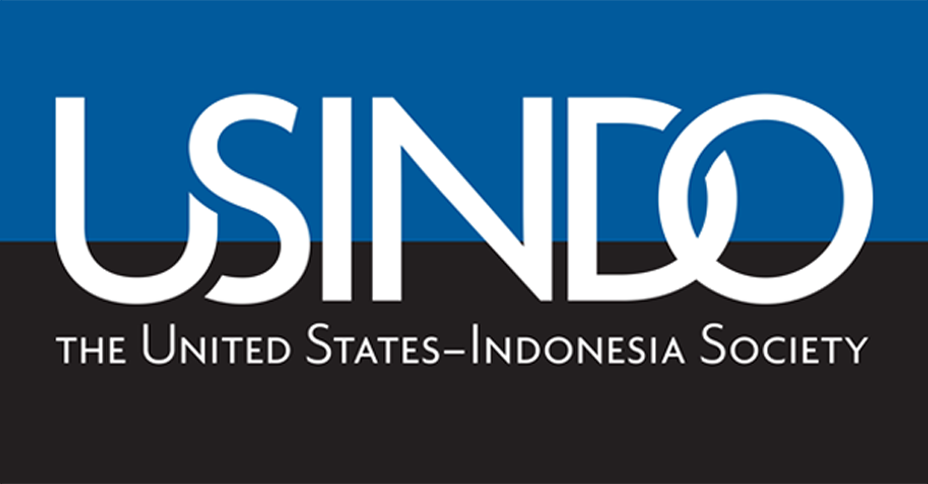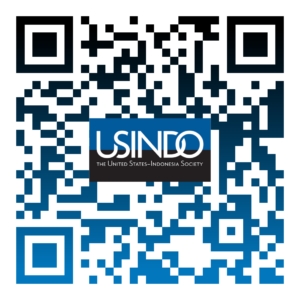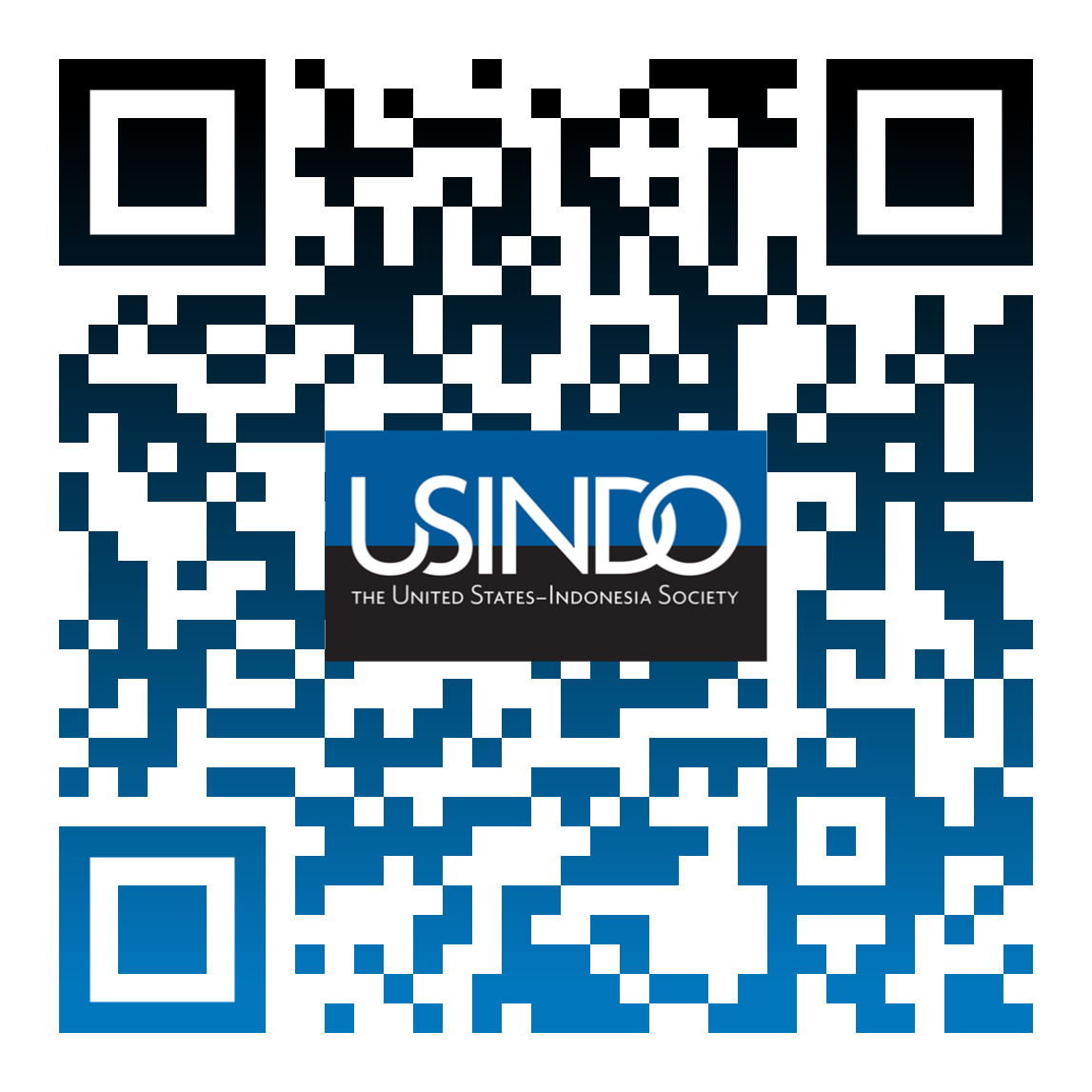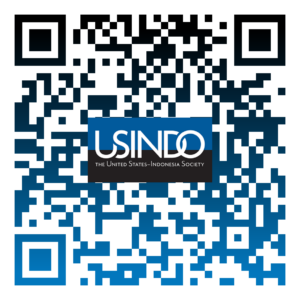USINDO LEAD (Leaders in Education Advancement and Digital Literacy)
USINDO LEAD is an immersive 8-session program designed exclusively for Indonesian university lecturers. Our mission is to empower educators to become leaders in education advancement and digital literacy, by adopting Problem-Based Learning and encouraging the development of their students’ Critical Thinking and Digital Literacy skills. Through a dynamic blend of live and self-accessed 90-minute sessions, participants will acquire the skills and strategies needed to excel in today's evolving educational landscape.
Session 4
This self-accessed session aims to:
➢ To review a variety of learning tools (lateral reading, roles in PBL, traditional vs AI-powered research skills, gamification with AI tools)
➢ To practice:
- assessing, managing and utilizing online resources,
- evaluation in determining source credibility,
- ecognizing potential fallacies & biases
- choosing EdTech to support learning
- evaluating choices of tools/methods to achieve objectives as well as ethics of using AI
LET'S CHECK THE PRACTICAL APPLICATION OF TOOLS AND APPS IN THIS SESSION:
- INTRODUCTORY & OUTRO VIDEO VIEWING,
- EDPUZZLE VIEWING & INTERACTION
- LATERAL READING PRACTICE & GOOGLE FORM SUBMISSION
- QUIZLET FLASHCARDS
- AI RECOGNITION SELF-TEST
- GAMIFYING YOUR LESSON with Chat GPT
- CONTRIBUTION TO SHARED GOOGLE DOC CHART
- PERUSING & ASSESSING ADAPTABILITY OF A SAMPLE PBL PROJECT
YOU WILL USE: EDPUZZLE APP, QUIZLET APP, GOOGLE FORM SUBMISSION, ChatGPT, GOOGLE CHART ON GOOGLE DOC
Lateral reading
TASK: Watch this short video on lateral reading and take notes for the next task, where you will put it into practice.
TEACHING TIP: You can create an EdPuzzle from any such video, short or long, on YouTube or from another source and use it to add questions or pointers to your students which ket points are most important to jot down.
OPTIONAL EXTENSION READING: Sentence stems for reading critically.
Recognizing biases & fallacies
TASK: Refresh your memory and english terminology of Logical fallacies you should know (with questions and examples) Spend no more than 12 minutes to read it, skim over the terms you already know.
TIP: OPTIONAL PRACTICE of some fallacy terminology with these QUIZLET flashcards (2 sets of 7 terms) SET 1 , SET 2 then play the fun match game for set 1 and match game for set 2
TEACHING TIP: Terminology is best practiced in a fun way; QUIZLET provides this opportunity for flashcards and games. Another good app is WORDWALL.
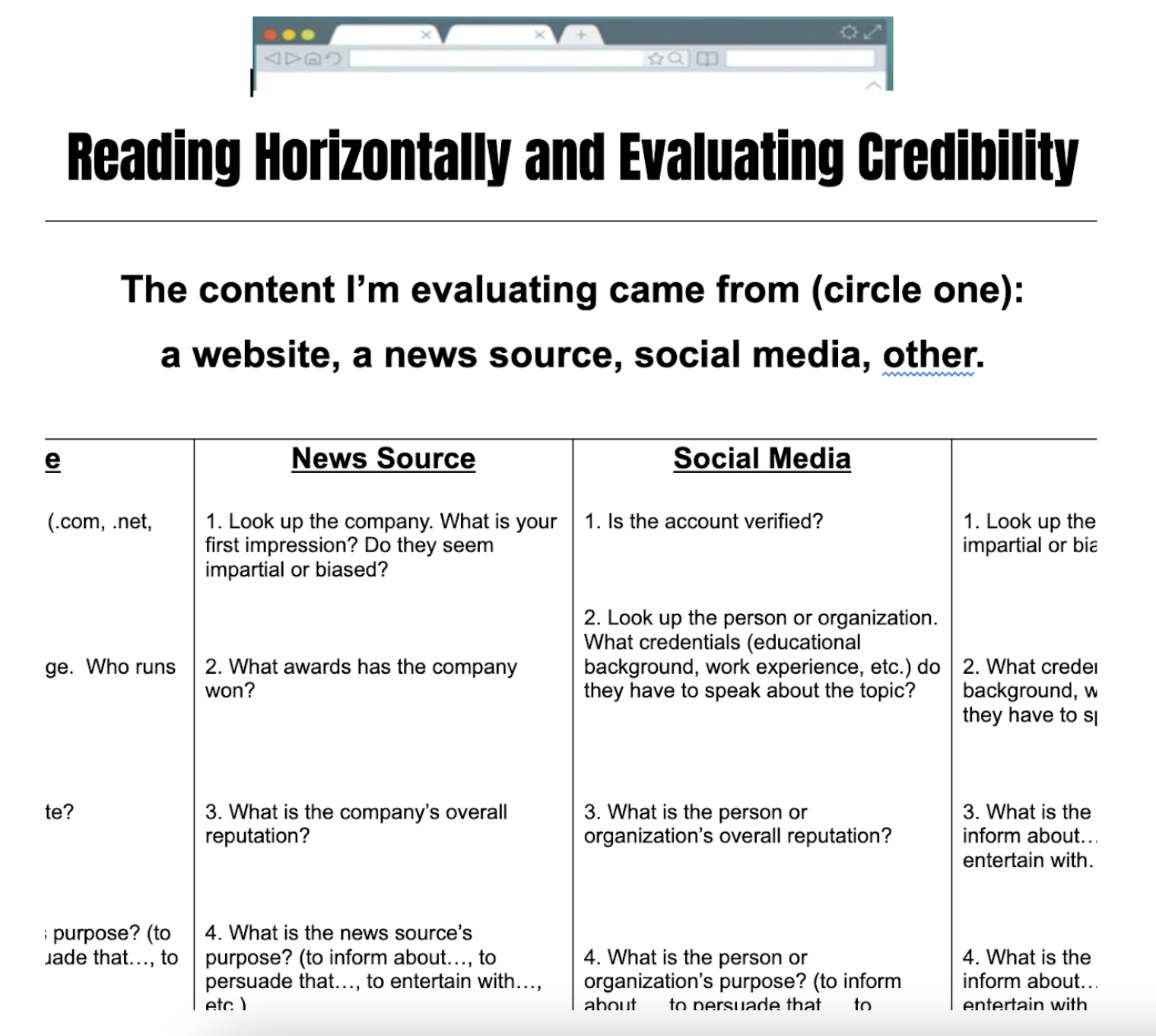
Lateral reading practice
TASKS:
To practice
→ assessing, managing and utilizing online resources.
→ evidence evaluation in determining source credibility
- APPLY CREDIBILITY STRATEGIES and BIAS LIST TO THE WEBSITE www.missionwinnow.com . Spend about 10 minutes on this task.
- On this GOOGLE FORM submit the number of steps it took for you to feel satisfied with the credibility check and write why.
TIP: OPTIONALLY, you can use this reading horizontally & evaluating credibility CHART (download it or make a copy) to help you evaluate the website.
TEACHING TIP: You can share such a chart with your students, ask them to fill it out and then post on a PADLET you make for your class, thus creating a bank of shared knowledge.
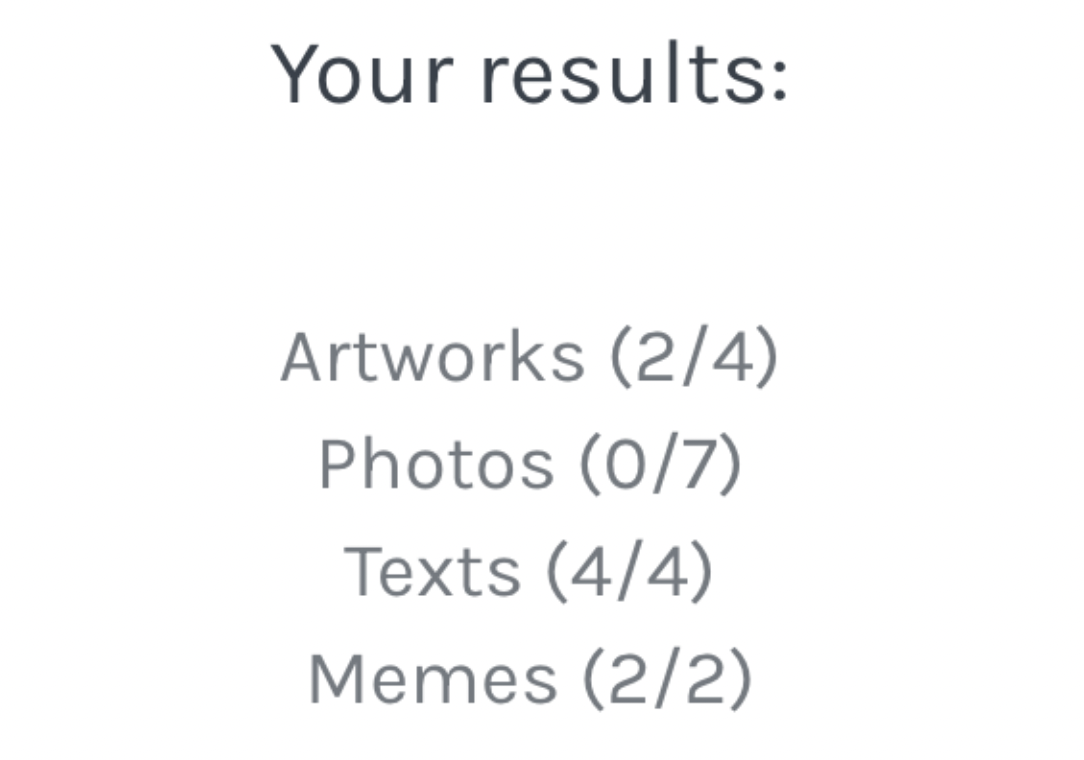
AI or not AI? This is the question 😉
Read this article by Kazimierz Rajnerowicz, Human vs AI Test: Can We Tell the Difference Anymore? written in April, 2023
TASK: Skim and scan the article and hover longer on the sections that interest you most for your course / subject area. Spend no more than 5 minutes on the article.
TIP: OPTIONALLY, take the test (it takes 4 minutes) and see how you fare in detecting AI-generated content.
And if you think it's easy - see my score in the screenshot on the left 😉 Not ashamed to score 4/4 on texts! But 0/7 on photos? That hurts ;)))

Practice of Critical Thinking
In today's digital world, research is different than the traditional library rearch for resources (even a digital library). AI-powered research is inevitable.
TASKS:
-
Think what kind of prompts need to be used for AI-powered search engines or chats, like ChatGPT?
-
Think what is the power of asking "the right" questions and follow-up questions. Check out the question stems in this PDF chart.
-
Think about the ethics of using AI to "help" or HELP with research and paper writing.
TEACHING TIP: Embrace new technology - it is here to stay. Let your students guide the way and help you along with tech side of it, but you LEAD them in CT

Gamify your lessons with ChatGPT
Read the blog post on gamification of lessons with AI tools titled Level Up Your Teaching, and also THIS example chat with ChatGPT that has been generated to illustrate the potential support of ChatGPT to gamify your classes.
TASKS:
1) Make a free account on ChatGPT if you don’t already have one
2) Copy-paste the instructions from the blog Level Up Your Teaching
3) Fill in the specific information you need to provide to AI to generate gamification for your needs.
ALERT: It would be awesome if you used a topic from your PBL unit or Case-Study lesson you’ve picked for your Course Project. SEE ASSIGNMENT FOR SESSION #5 BELOW.
4) Press “send” and watch AI generate a gamified lesson for you. Of course, you can tweak it to your liking, ChatGPT will only make suggestions.
Resource bank of best TOOLS
In this article titled 25 Critical Thinking Apps for Extended Student Learning you will find -- well, 25 apps 😉 . But they seem to refer to the lower education settings, not college/university. Let’s pool our knowledge together by creating a resource bank and share best tools for university settings.
TASK: Remember this Google doc? Let's get back to it and ADD or CHANGE any of the apps, now that you're aware of MORE options. Find your name and adjust or augment your TOP TWO tech tools you use in your course/field by ADDING another tool if you think it's warranted.
CAVEAT: You can’t list THE SAME tools that people have already listed! Come up with another one 😉
Chart data bank for PBL
Choosing EdTech to support hands-on experimentation, data analysis, and modeling in STEM disciplines isn't easy. Let's help each other by creating a LIST of the best tools.
TASKS:
- Peruse this article titled 10 Essential Tools For Better Project-Based Learning
- Read this article titled Project-based Learning, Inquiry Teaching and the Power of ChatGPT for ideas.
- Add your suggestions to this Google chart to share with your colleagues.
CAVEAT: You can’t list THE SAME tools that people have already listed! Come up with another one 😉

Example PBL project
EXAMPLE PBL PROJECT ON CHAT GPT ETHICAL USE
LINKED HERE you’ll find an EXAMPLE English Language Arts PBL unit designed to help students develop their writing, research, multimedia, collaboration, and design thinking skills to cultivate a deeper understanding of AI and how they feel it should be used. It is shared with you as an inspiration for your own PBL unit (or part of it, a short-term case-study or problem-based learning set of activities) for our COURSE PROJECT.
CAVEAT: THIS IS A HIGH SCHOOL PBL UNIT, SERVING AS A COMPREHENSIVE EXAMPLE OF PBL UNIT DESIGN. IF YOU ACTUALLY WISH TO USE ITS ELEMENTS, YOU MAY NEED TO REDESIGN THE SELECTED HANDOUTS/PPT SLIDES.
TASK 1:
A) Peruse the example PBL unit
B) Evaluate the structure of the unit and the choices of tools/methods to achieve the set objectives (BOLDED ABOVE).
TO WHAT EXTENT DO YOU THINK THEY ARE MET?
a) not met: i’m not convinced this project allows them to be met
b) barely met: i feel confused, i still can’t see how this project allows them to be met
c) partially met: i’m still trying to figure out how these objectives are met & measured
d) fully met: i understand how the pbl unit helps students meet the objectives & how they are assessed.
TASK 2: To what extent are the slides/elements of the example PBL project inspiring / useful / adaptable to your course/ field of study ? make a list of the pages/slides you might want to use in your course project.
TASK 3: Think how you could incorporate the student-teacher check-in conference during the PBL unit/project in your own class/course. Take notes on how you might need to redesign the handouts.
TASK 4: Think how you could incorporate the prototype section of the example PBL unit. take notes how you might need to redesign the instructions/handouts for your field of study/the course you teach.
ALERT: TAKE NOTES OF YOUR ANSWERS AND BRING THEM TO SESSION 6
Summary of Session 4
➢ To review a variety of learning tools (lateral reading, roles in PBL, traditional vs AI-powered research skills, gamification with AI tools)
➢ To practice:
- assessing, managing and utilizing online resources,
- evaluation in determining source credibility,
- recognizing potential fallacies & biases
- choosing EdTech to support learning
- evaluating choices of tools/methods to achieve objectives as well as ethics of using AI
Preparation for Live Session 5
FOR SESSION 5
Mandatory selection of one lecture/session of selected unit (OR COMPLETE UNIT) to be revised in session 5 live collaboration by including CT/ DL/PS skills & tools = base for your COURSE PROJECT
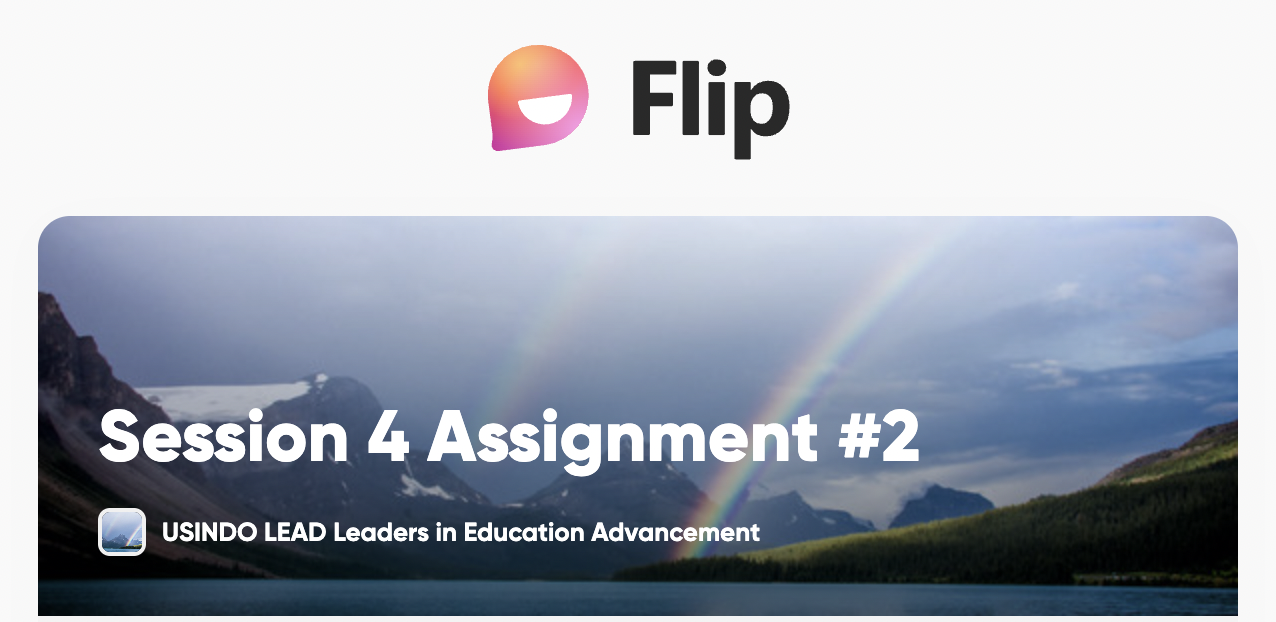
Scan the QR code for the FLIP Group for LEAD down below or click https://bit.ly/FLIPGroupforLEAD
ASSIGNMENT #2
SPEAKING & LISTENING TASK - a recording of own video uploaded to FLIP - https://bit.ly/FLIPSession4Assignment2 - then listen to another teacher’s video and respond.
TASK 1: Explain the structure/objectives of your original selected lecture/session to someone from another field and outline how you might introduce CB-PBL elements as well as CT/DL skills & tools to change/improve it. Record your video and upload to FLIP. MAX 3 minutes talking about your potential shift of pedagogy, strategies and tools.
TASK 2: Listen to another teacher’s video and respond with a comment on their contribution, while also reflecting on potential alterations to your own ideas) (max 1 minute response to another teacher’s video)
